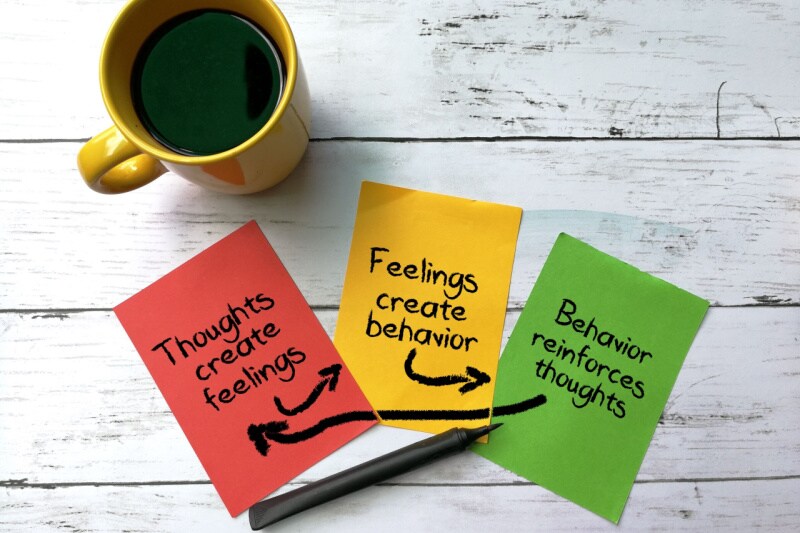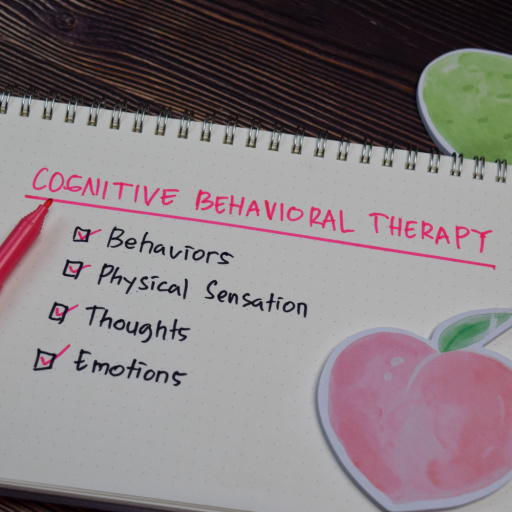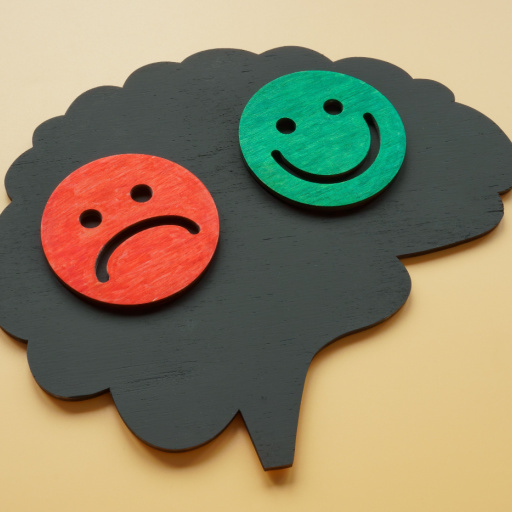Ever thought about how your thoughts influence your feelings and decisions? This involves the core aspects of cognitive behavioral therapy, a dynamic approach that redirects your thought process so that you can be at your best daily!
इनके बारे में जानें:
- Definition and a brief explanation of cognitive behavioral therapy (CBT)
- Principles and core concepts of cognitive behavioral therapy
- Applications of cognitive behavioral therapy
- CBT techniques and strategies for self-help
Definition and a brief explanation of cognitive behavioral therapy (CBT)
 Cognitive behavioral therapy technique (CBT) is a form of psychological treatment that is effective for treating various mental health conditions, like depression and anxiety. It involves being more aware of your thought process and reaction to triggering events. Several mental health practitioners use CBT to help you develop healthy coping skills and manage stressful situations.
Cognitive behavioral therapy technique (CBT) is a form of psychological treatment that is effective for treating various mental health conditions, like depression and anxiety. It involves being more aware of your thought process and reaction to triggering events. Several mental health practitioners use CBT to help you develop healthy coping skills and manage stressful situations.
Principles and core concepts of cognitive behavioral therapy
Here are the main principles of the cognitive behavioral therapy technique:
- Childhood experiences:
Human beings are shaped by their childhood experiences. Your earliest memories play a huge role in shaping your core personality traits. Hence, understanding your childhood environment can help you understand the origin of your beliefs and make you more aware of your thought process.
- Negative emotions:
We pay more attention to negative news than positive ones. This can lead to cognitive errors, such as irrational thought processes. These emotions are typically rigid and are, therefore, unrealistic.
- Involuntary negative thoughts:
We all have negative thoughts at times. Involuntary negative thoughts or cognitive distortions are sudden thoughts about specific events that invoke feelings of low self-esteem and uselessness. These thoughts often occur rapidly and are hard to pinpoint. Some examples of cognitive distortions are:
- Impulsive thought patterns like thinking you are a failure for making a mistake.
- Overgeneralization, which involves making far-fetched assumptions about a subject from a very limited experience.
Applications of cognitive behavioral therapy
Here are some of the applications in daily life where you can use the cognitive behavioral therapy technique to make effective changes:
- Help manage strong emotions like fear, grief, anger or sadness
- Prevents mental illness relapses
- Improves communication skills
- Helps deal with conflict resolution
- Helps you to be more assertive
The cognitive behavioral therapy technique can help you manage certain mental health issues, including:
- Substance abuse
- बाइपोलर विकार
- ईटिंग डिसऑर्डर
- Obsessive-compulsive disorder
- Schizophrenia
- पोस्ट-ट्रॉमेटिक स्ट्रेस डिसऑर्डर / किसी आघात के बाद होने वाला चिंता विकार
- Phobias
- नींद से संबंधित विकार
CBT techniques and strategies for self-help
 Here are three easy CBT techniques that can help you make meaningful changes to your life.
Here are three easy CBT techniques that can help you make meaningful changes to your life.
- Exposure therapy
Deliberate exposure to triggering events or anxiety-inducing activities can enable you to overcome certain phobias. While the initial sessions might be challenging, note that exposure therapy is conducted in a highly monitored environment for a limited timeframe and under the guidance of a professional therapist.
- ABC technique
This technique aims to help you notice the negative cycle of thoughts and feelings and transform them into positive perspectives. You can break free from these negative thought patterns, thereby fostering a behavioral shift.
- Activating event: An event that led you to negative thinking
- Belief: Negative thoughts that surfaced during the event
- Consequences: Ultimate result or the behavior that occurred because of the event
The main goal behind this practise is to understand your reactions to certain events and how you can change them to transform your quality of life.
- Journaling
Keeping track of your thoughts and feelings can make you aware of your own cognitive errors and manage them.
Cognitive behavioral therapy’s essence lies in understanding your thoughts, feelings and actions. By learning to manage the way you think, you can identify dysfunctional thought patterns and remove them with a reformed mindset.
Stay tuned to the Activ Living Community. Keep up to date with the latest health tips and trends through expert videos, podcasts, articles, and much more in पोषण, फिटनेस, सचेतन, और लाइफस्टाइल से जुड़ी बीमारियां like Asthma, Blood Pressure, Cholesterol, and Diabetes.
You may also be interested in the following blogs:
- Unlocking Healing Harmonies: The Power of Music Therapy for Mental Health
- मानसिक स्वास्थ्य के रोग काम और फुरसत के समय को कैसे प्रभावित करते हैं? ऑक्यूपेशनल थेरेपी कैसे मदद कर सकती है?
Popular Searches
How to lower blood pressure | Fruits good for liver | Unhealthy foods | रागी के लाभ | बेसल मेटाबोलिक रेट | हाई ब्लड प्रेशर के लिए एक्यूप्रेशर पॉइंट्स | Ayurvedic medicine for blood pressure | How to control cholesterol at home | Homeopathy for Asthma | Biological Age | Home remedies for TB | Natural beta blockers | Negative effects of internet | Types of walking | ब्लड प्रेशर कैलकुलेटर | ब्लड शुगर कैलकुलेटर | BMI कैलकुलेटर





 1800-270-7000
1800-270-7000








